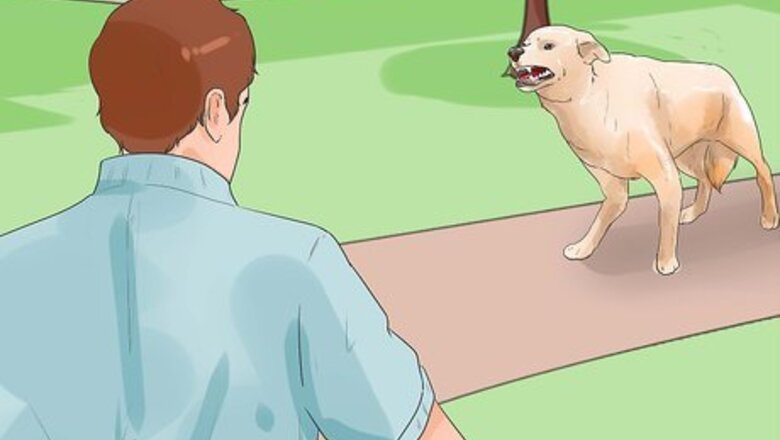
views
X
Research source
To catch a dog without endangering its safety or your own, you will need to plan out your strategy carefully and decide what you will do after you catch him.
Assessing the Situation

Observe the dog's body language. Before moving any closer to the dog, watch his body language from a distance. Erratic behavior could be a sign of rabies. Growling or snarling would indicate that he is feeling aggressive. The dog may tense his muscles or walk stiffly if he is fearful.
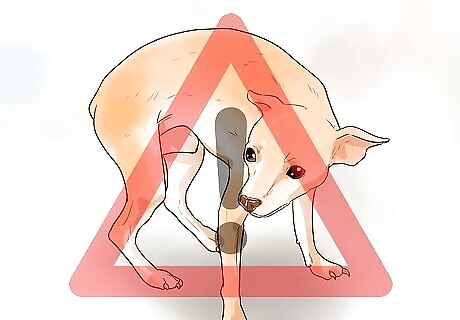
Determine your comfort level with catching the dog. Observing the dog's body language is a good way for you to decide if you can, or should, catch him. If the dog is fearful, but does not seem threatening or overly aggressive, you may be able to catch him. However, if his body language suggests that he is not afraid to attack or bite, contact your local animal control or police to catch him. Call the police if you are in a rural area where there may not be an animal control center close by. When you contact the authorities, provide as much information as you can: your name and number, and precise information about the location of the dog (e.g., landmarks, mile markers, road names). Also, ask for an expected time of arrival. If you can, keep a close eye on the dog until the authorities arrive.
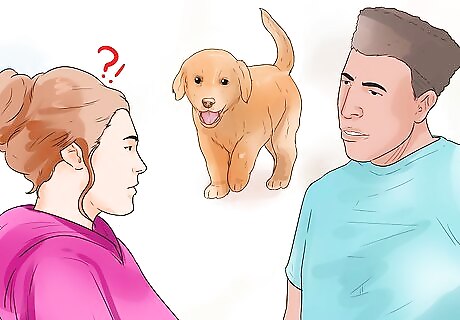
Ask if anyone knows that a dog is missing. If you see the dog in a populated area, such as a neighborhood, consider asking some of the residents if they are aware that a dog is missing. If no one is aware that a dog is missing, recognizes the dog, or knows who the dog's owner is, you will need to proceed with either catching the dog on your own or contacting the local authorities. If you see a dog that looks lost in a neighborhood, it could be that he has wandered only a short distance away from his owner's house.
Getting the Dog Comfortable With You
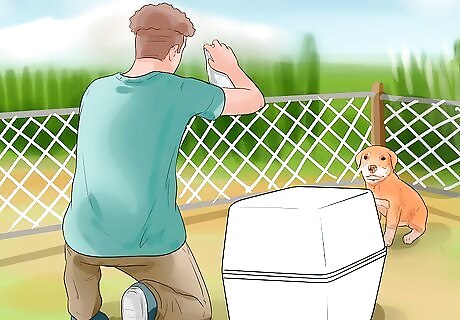
Secure the area. This is particularly important if you see a dog by the side of the road and want to get him in your car. Because the dog is already in 'fight or flight' mode, attempts to catch him may cause him to run into traffic and possibly get hit by a car. Try to create a barrier between him and oncoming traffic using such materials as a crate, a long piece of cloth, or a length of rope. Signal to oncoming traffic to drive around the secured area to keep both you and him safe. It may help to put your hazard lights on. If you see the dog in a neighborhood, use tasty dog food lure him to a contained area, such as a fenced-in yard, where he could not easily escape. You may need the assistance of several people to do this. Keep in mind that it will be difficult to move him to another area if he is not comfortable with you.

Display non-threatening signals. Your ability to catch the dog will depend on how comfortable he is with you. If your first move is to walk towards the dog, no matter how slowly and carefully, you will probably scare him off. Rather, you will need to present yourself as non-threatening from a safe distance away. Consider licking your lips or yawning. Act like you are eating food off the ground. Crinkle an empty bag of potato chips and, with the dog watching you, pretend that you are dropping food on the ground and kneel down as if you were eating the food. Say 'Nummy!' as you are 'dropping' the food. Sit down on the ground, or maybe even lie on your back if it is safe for you to do so. The closer you are to the ground, the less threatening you will seem to the dog. Once the dog sees that you are not a threat, he may approach you simply out of curiosity.
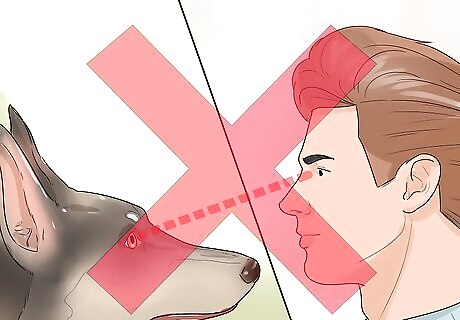
Avoid making threatening gestures. Even if your intentions are good, some of your actions will probably stir up the dog's fear and adrenaline and cause him to run away. For example, do not the call to the dog. Chances are that people have been repeatedly calling to the dog in attempts to rescue him. Being called to yet again will make the dog even more fearful. Avoid patting your leg or walking towards him. Do not make eye contact with the dog.

Entice the dog to come closer to you. Although the dog may no longer be frightened of you, he may still be wary of approaching you. One of the best ways to get him to walk towards you is with tasty morsels of food, such as hot dogs, canned food, and meat-based treats. The trick is to give the food to him in small bits—this will keep him wanting more. If you give him a big chunk of food, he may just take the food and run away again. Soft food with a strong aroma is ideal. You can either toss the food towards him or hold the food in your hand. Either way, try to appear disinterested in the food—your disinterest will likely pique his interest. If the dog refuses to come closer to you, you can either contact the local authorities or try to catch him in a humane trap.
Catching the Dog
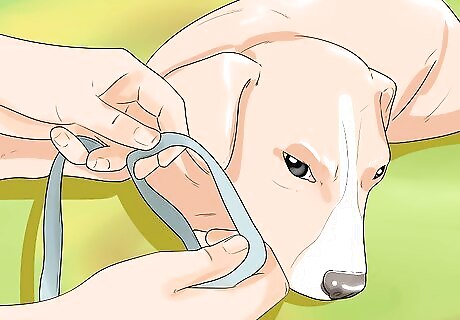
Put a leash on the dog. Provided the dog is willing to come close to you, you can try to catch him with a leash. Before you put the leash on him, leave it limp on the ground for him to approach and investigate it. Keep feeding him tasty food and showing him you're not a threat. When you go to put the leash on him, you will need to be calm and swift. Any sudden or jerky movements could make it very difficult for you to get the leash on. It may be helpful to make the leash into a slip lead by threading the clasp through the leash's handle and placing the large loop of the leash over the dog's neck. By creating a slip lead, the loop will automatically tighten as the dog tries to pull away from you, giving you a little more control. If the dog refuses to let you put a leash on him, stop immediately and call animal control or the police. Do not risk injury to yourself.

Check for identification. Once you have caught the dog with a leash, check to see if he has a collar with an identification tag. If he does not have a collar, then a veterinarian or animal shelter staff can scan the dog for a microchip. A microchip is a small chip placed under a dog's skin, usually between the shoulder blades. The chip's number links to an electronic database that has the owner's contact information.
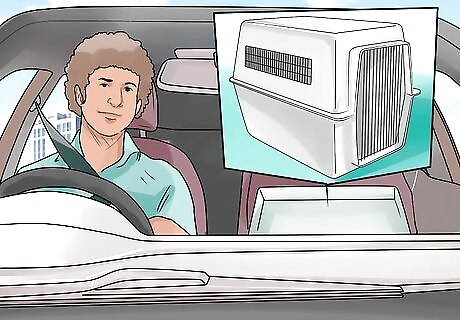
Transport the dog to a veterinarian or animal shelter. If you are able to get the dog safely in your car, take him to a veterinarian or animal shelter right away. Dog owners commonly go to animal shelters when they have lost their dog, so you may prefer to take the dog to the nearest animal shelter first. The decision is up to you. You may need to put some tasty food in the backseat of your car to lure him in. Do not attempt to transport the dog if he becomes agitated once he is in the car. His agitation could make driving very dangerous for you. Keep the car doors closed and contact the local animal control or police to come pick up the dog.
Deciding What to Do With the Dog

Surrender the dog. If you were able to catch the dog, you will now need to decide what you are going to do with him. As heartwarming as it may sound to adopt him, you should first explore your different options. One option is to surrender him by taking him to an animal shelter. If you surrender him to an animal shelter, the shelter will place a 'stray hold' on the dog before making him available for adoption. This holding period, usually between three and 10 days, is a legal obligation that ensures the dog will not be adopted out if his original owner claims him within that timeframe. Surrendering the dog at the animal shelter may make it easier for his owner to find him. Be mindful that your veterinarian's office may not be able to house the dog. In fact, some veterinary offices serve as pick-up locations for animal shelters.

Find the dog's owner. If you choose not to surrender the dog, then you will need to foster him temporarily and attempt to find the dog's owner. In most places, you are legally obligated to do your due diligence to locate the dog's owner before rehoming the dog. The amount of time required to search for the owner may vary by location. Check with your local animal control about the requirements for your city and state. Your efforts to find the dog's owner must be documented. Contact your local animal control center or animal shelter if you decide to find the dog's owner on your own. This lets them know you have the dog in case the owner contacts them. If the dog has an identification tag or microchip, contact the owner directly. If you cannot contact the owner directly, post flyers in different locations (e.g., veterinary offices, supermarkets, newspaper). The flyers should have a picture of the dog, information about where and when you found him, and your contact information. Do not include every detail about the dog on the flyers. That way, when people start to contact you, you can ask more specific questions to identify the actual owner. Consider posting the dog's information on animal rescue websites, such as Petfinder.
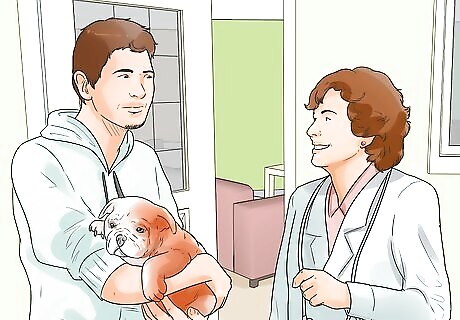
Find a new home for the dog. If the period of due diligence has passed and you are unable to locate the dog's owner, begin to find the dog a new home, whether it's your home or someone else's. If you want to adopt him, you will need to prove that you are his new owner by obtaining a new license, collar, identification tag, and providing proof of vaccination. If you have other pets, consider if they would get along with the new dog. The time you spent fostering the dog would have let you observe the interactions between the dog, your current pets, and other household members. If adopting the dog will not work for you, work on finding another owner for the dog. Take him to your veterinarian for some initial care (e.g., vaccinations, deworming), then start putting the word out in the community through friends, neighbors, and social media. Contact local animal shelters and rescue groups for help with finding a new home for the dog.



















Comments
0 comment